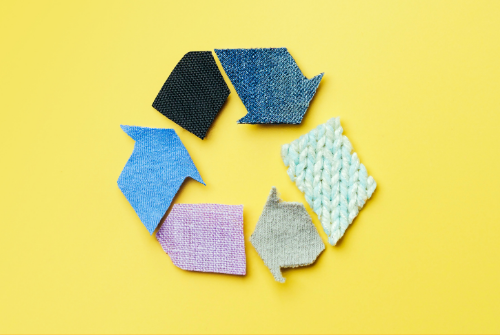Nonwovens are fabric-like materials made by bonding fibers together through chemical, mechanical, and heat processes. Nonwoven fabrics play an increasingly large role in the global manufacturing of many consumer products. In this article, we’ll look at some of the trends shaping the future of nonwovens in 2020 and beyond.
Sustainability
These days, you can’t have a conversation about nonwovens without mentioning sustainability. The nonwoven industry has long been at the forefront of the movement for products that are renewable, eco-friendly, and above all, sustainable. A combination of increasing government regulation and growing consumer demand has led nonwoven manufacturers to make a number of significant changes in recent years.
For example, the nonwovens industry has begun to offer more sustainable versions of the disposable household products that we rely on, such as wet wipes and sanitary items. Innovative processes like combining wet laid and hydroentanglement technologies have paved the way for nonwoven products made from 100 percent natural and/or renewable raw materials without chemical binders. In addition, many people in the industry are discussing ways to increase reusability and move closer to a zero waste model.
A Growing Market
The market for nonwovens is growing fast in terms of both geographies and sectors. The Asia-Pacific market in particular has shown enormous growth as a result of accelerating economies in China and India, bolstered by a strengthening manufacturing presence. These economies utilize nonwoven products in a wide variety of applications, including geotextiles and the automotive industry.
Another key factor is the increased application of nonwovens in high-value goods, which is due in large part to companies investing in performance and quality. Nonwovens were once regarded as merely an alternative to woven and knit substrates, but are now cementing a place of their own as the preferred material in a broad range of sectors.
The Shift from Disposable to Reusable
While nonwovens have long been trusted across a variety of disposable, single-use applications, they are now becoming the material of choice for many reusable applications as well. Advances in printing technology may lead to the replacement of multicolored woven fabrics with simple woven fabrics printed to mimic the finer structures. Nonwoven structures would provide a fantastic, cost-saving alternative for such applications.
More broadly, the need to save costs without sacrificing performance is front and center, and this is a place where nonwovens excel. They can successfully replace many traditional structures while saving big on capital costs, power consumption, and carbon footprint.
Changing Consumer Habits
Today’s consumers purchase products quite differently than their parents and grandparents did. Historically, consumers have chosen products based on logical and practical criteria. While this is still largely true, the modern consumer also considers brand values and lifestyles more than ever before. Purchasing decisions are often driven by a combination of emotional and practical desires.
For example, environmentally friendly practices are deeply important to many consumers in 2020. So is engagement and an alignment of company values with their own. With a highly saturated market and a near-endless array of product choices, it’s becoming crucial to set your brand apart by embodying the values that are important to consumers.
At Barnhardt, we’re committed to sustainability in nonwoven manufacturing, from sourcing of our cotton to refining purification processes to be gentler on the environment. For decades, we’ve been an innovation leader in developing new, high-performance cotton fiber technologies for personal hygiene, baby care, wipes, beauty, medical care, and more. We know that cotton, the original natural fiber, is the standard for meeting consumer demand and preferences for softness, comfort, and safety without sacrificing product performance.
